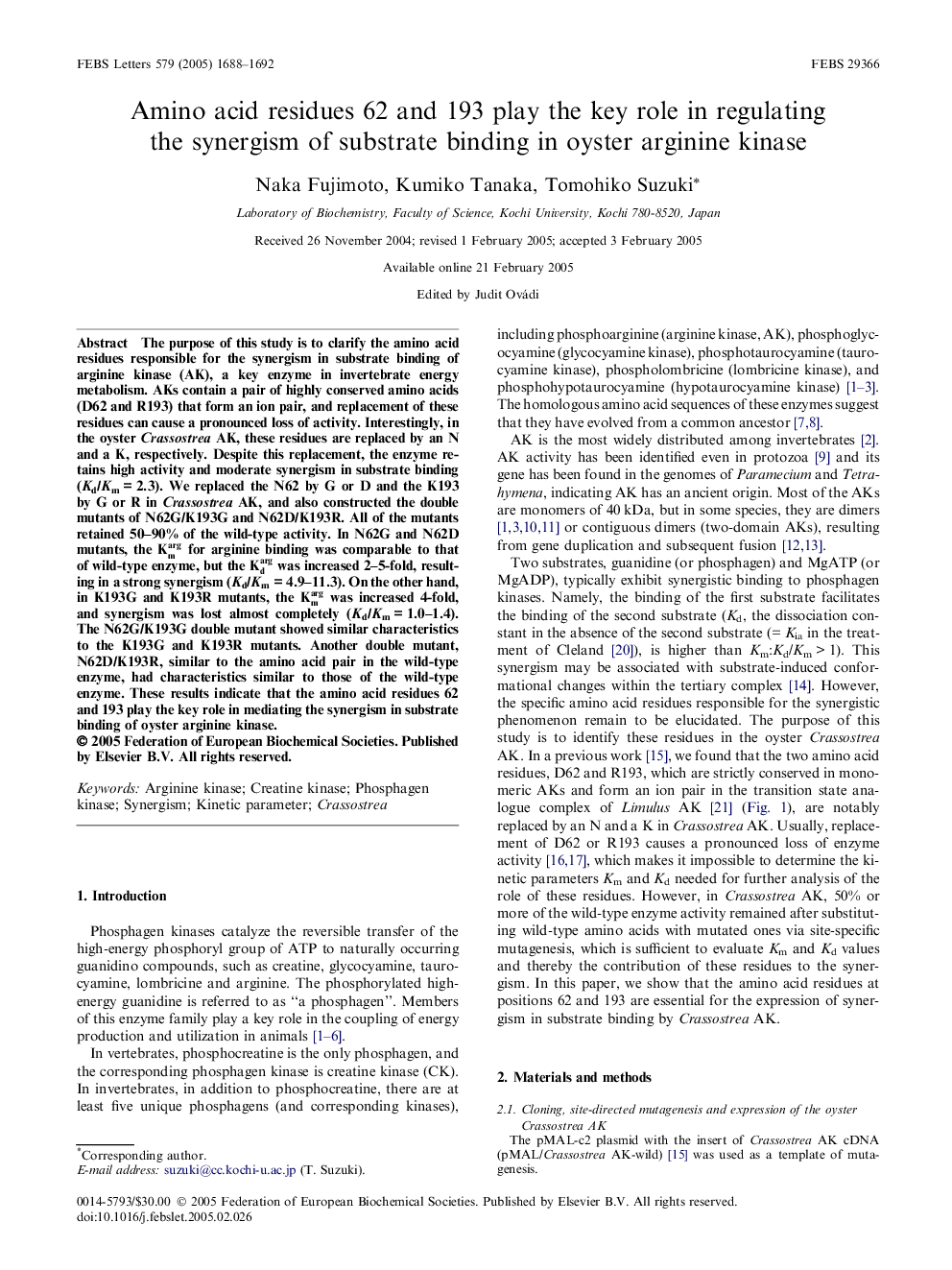| Article ID | Journal | Published Year | Pages | File Type |
|---|---|---|---|---|
| 10872872 | FEBS Letters | 2005 | 5 Pages |
Abstract
The purpose of this study is to clarify the amino acid residues responsible for the synergism in substrate binding of arginine kinase (AK), a key enzyme in invertebrate energy metabolism. AKs contain a pair of highly conserved amino acids (D62 and R193) that form an ion pair, and replacement of these residues can cause a pronounced loss of activity. Interestingly, in the oyster Crassostrea AK, these residues are replaced by an N and a K, respectively. Despite this replacement, the enzyme retains high activity and moderate synergism in substrate binding (Kd/Km = 2.3). We replaced the N62 by G or D and the K193 by G or R in Crassostrea AK, and also constructed the double mutants of N62G/K193G and N62D/K193R. All of the mutants retained 50-90% of the wild-type activity. In N62G and N62D mutants, the Kmarg for arginine binding was comparable to that of wild-type enzyme, but the Kdarg was increased 2-5-fold, resulting in a strong synergism (Kd/Km = 4.9-11.3). On the other hand, in K193G and K193R mutants, the Kmarg was increased 4-fold, and synergism was lost almost completely (Kd/Km = 1.0-1.4). The N62G/K193G double mutant showed similar characteristics to the K193G and K193R mutants. Another double mutant, N62D/K193R, similar to the amino acid pair in the wild-type enzyme, had characteristics similar to those of the wild-type enzyme. These results indicate that the amino acid residues 62 and 193 play the key role in mediating the synergism in substrate binding of oyster arginine kinase.
Related Topics
Life Sciences
Agricultural and Biological Sciences
Plant Science
Authors
Naka Fujimoto, Kumiko Tanaka, Tomohiko Suzuki,
